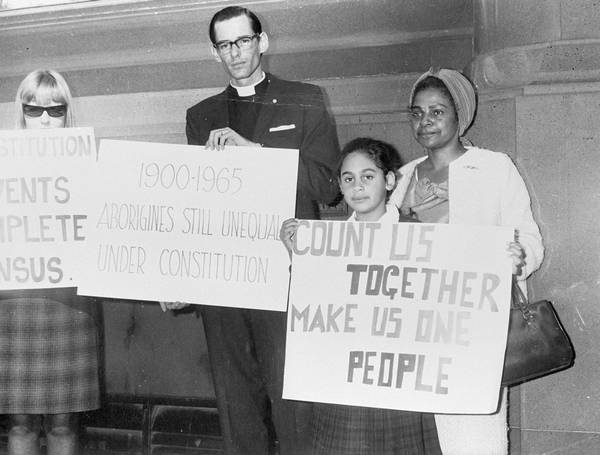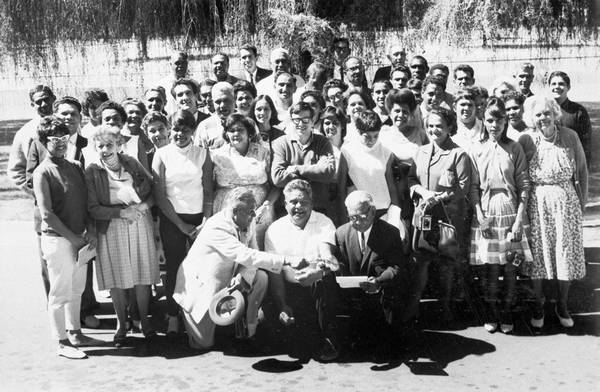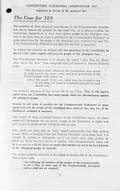
Public figures, such as Faith Bandler, religious leaders, and children featured in the campaign for a YES vote on the Aboriginal question.
Source: Audiovisual Archive, Australian Institute of Aboriginal and Torres Strait Islander Studies, Canberra
The usual practice when a question is put at referendum is for the arguments for and against the change to be set out for voters. In this case, however, the changes were supported by all major parties so no opposing case was presented.
Churches came out in favour of a YES vote. The Australian Council of Churches, the Methodist Commission on Aboriginal Affairs and the Society of Friends had developed policies in Aboriginal affairs which favoured greater Commonwealth power in formulating and implementing policy for Aboriginal advancement. Some journalists made dire predictions for the society if the NO vote was the stronger.
A lively debate was conducted through the letters to the editor pages of daily newspapers, and campaigners wrote directly to the Prime Minister, Harold Holt, urging him to publicly support a YES vote.
Aboriginal spokespeople gained effective media coverage throughout the campaign. The government supported the passage of the referendum but it had no plans for change.
Bill Onus campaigning for a YES vote at the 1967 Referendum
Courtesy Herald and Weekly Times, May 1967
More info on Bill Onus campaigning for a YES vote at the 1967 referendum
Faith Bandler, New South Wales director of the 'Vote YES for Aborigines' campaign
Courtesy The Sun (Melbourne), 19 May 1967
More info on Faith Bandler, New South Wales director of the 'Vote YES for Aborigines' campaign
The Federal Council for the Advancement of Aborigines and Torres Strait Islanders, (FCAATSI), set up a national 'Vote YES' directorate headed by Gordon Bryant and Joe McGinness. State directors were also appointed to run the campaign in each state. It was FCAATSI, rather than the government, which campaigned strongly for a YES vote.

Aboriginal and Islander delegates and observers from all over the country met in Canberra. Kneeling: Bert Groves, Joe McGinness and Doug Nicholls.
Source: Audio Visual Archive, Australian Institute of Aboriginal and Torres Strait Islander Studies, Canberra
Their campaign was driven by the view that the vote for change needed to be overwhelming in order to persuade the federal government that it had a responsibility to use the power provided by the amendment. Notice the strategies used to persuade voters in the following four different appeals.
'The rights of the Australian Aborigines AND YOU'
Source: Papers of Gordon Bryant, MS 8256, Box 175, National Library of Australia http://nla.gov.au/nla.obj-234748811
More info on 'The rights of the Australian Aborigines AND YOU'
Pamphlet, 'Right Wrongs Write YES for Aborigines on May 27'
Box 175, Gordon Bryant Papers, 1917-1991, MS8256/11, National Library of Australia
More info on Pamphlet, 'Right Wrongs Write YES for Aborigines on May 27'
Throughout the 1960s, states had been removing discriminatory laws and, by this time, discriminatory state legislation existed only in Western Australia and Queensland. With very minor exceptions the discriminatory clauses in Commonwealth legislation had been removed as well. Campaigners did not draw attention to this fact. The 'rights' rhetoric continued to be used as a strategy that they believed would be most likely to persuade voters.
Related resources
People
Organisations
Methodist Commission on Aboriginal Affairs
Society of Friends
Federal Council for the Advancement of Aborigines and Torres Strait Islanders
